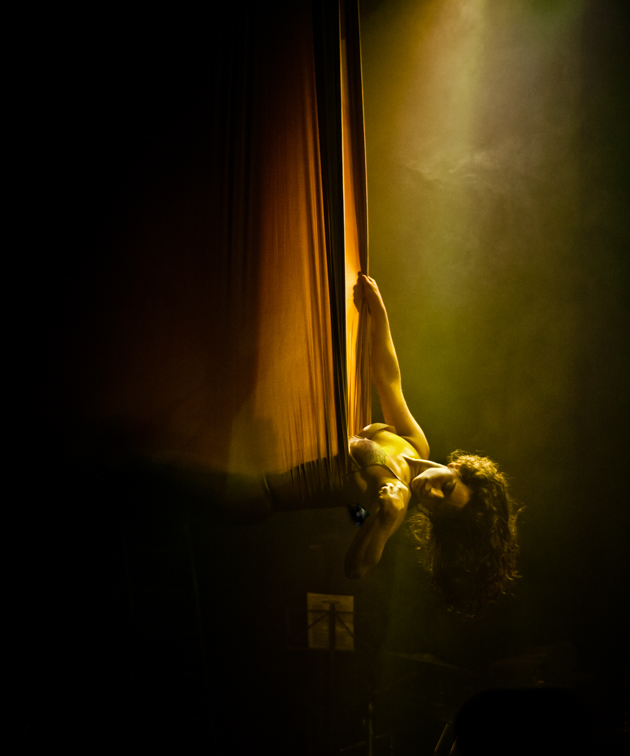Sarah Longbottom
25 May 2016
Fringes of Brighton - A Photographic Exhibition for Brighton Fringe 2016
This year the city celebrates the 10th anniversary of the Brighton Fringe and the 50th anniversary of the Brighton Festival.
In the spirit of the celebrations this year Heather Buckley and David Smith are exhibiting ‘Fringes of Brighton’ 5th May – 6th June 2016 – a showcase of photographs from events in Brighton taken over the last decade at MADE in North Road Brighton.
The exhibition is well worth a visit, it'll make you smile and so will the the coffee, lunch, and cakes.
The work that goes into putting on an exhibition requires a lot of the skills that we teach here. Photoshop and Lightroom of course, but also social media and content marketing. Many artist need to be thier own publicists these days. I managed to speak with Heather and David about their work and also with Leigh-Anne who opened the Gallery and Cafe MADE earlier this year.
I grabbed Heather today to talk about how she produces some of her amazing shots. I enjoy photography so it was a good opportunity to gain a little insight, particularly into the action shots.
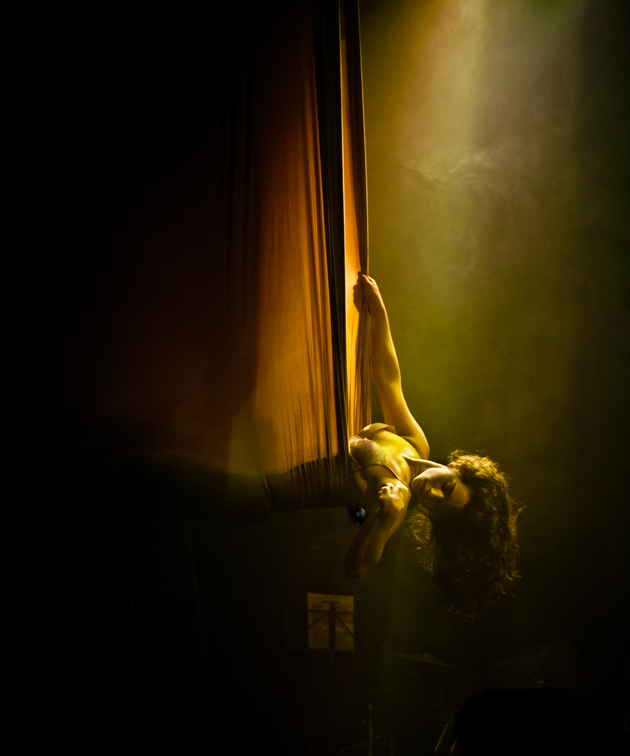
Melissa Marie, Le Scandal Brighton Fringe 2008 - Heather Buckely
Heather Buckley
How long do you spend composing an image?
"This depends on the type of photograph. Action shots become instinctive; you see the action and get into position. With others the background is the inspiration so you need to wait longer for the right event to enter the frame."
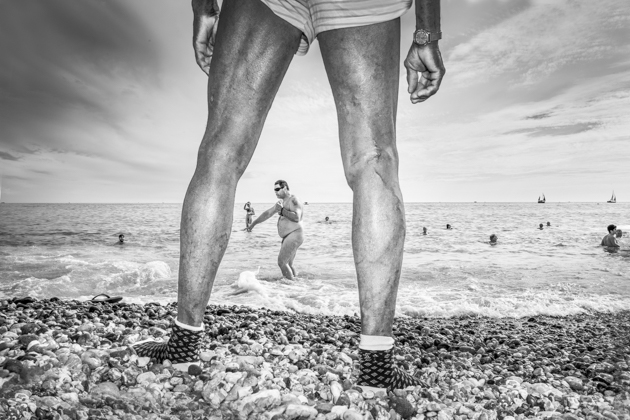
Brighton Naked Bike Ride 2014
At the private view of ‘Fringes of Brighton’ I was drawn to ‘Head First Acrobats’, how did you compose this?
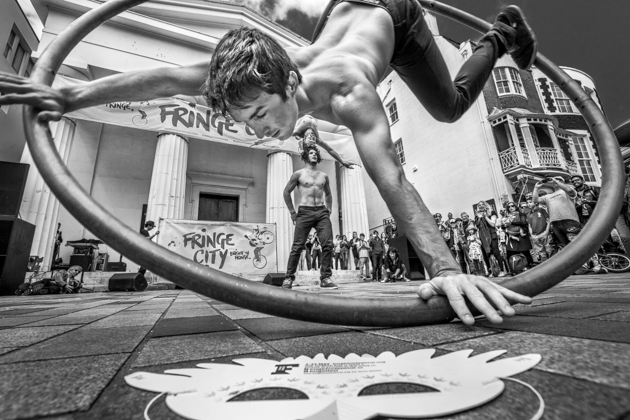
Head First Acrobats, Brighton Fringe City 2015
"This is an example of deciding very quickly when to take the image, there are only so many times the acrobat will revolve. I didn’t look through the viewfinder to capture this but by holding a wide angle lens low and watching the action approach. I clicked when I estimated the time was correct, the image was captured. If you were to look through the viewfinder you would miss all the action!
Funnily enough I was teaching a photographic workshop that day and if you look carefully at the left and right hand sides of the crowd you will see my students attempting the same shot."
How many versions of each shot do you take?
"For this particular image I didn’t have the opportunity to take a huge number of shots. Some photographers suggest taking pictures in burst mode but the number of images this captures can be an editing a nightmare. With experience you will know when to take the image you want, you become tuned in with what’s going on around you so you will know when the right image occurs.
The problem with burst mode is it wastes so much time processing on the computer and hogs file space."
How do you choose the final image to work on?
"Again with experience you will quickly recognise which are the best images and therefore know which to edit. You will often get a gut reaction and most people instinctively know which one they like, you get used to seeing images that follow your style and composition preferences."
What software do you use post production and how much time do you spend?
"I use a mixture of Adobe Lightroom and Photoshop. I tend to adjust the colour and tone in Lightroom and then take the image into Photoshop if necessary. If you need to work on larger areas it’s best to work in Photoshop. When preparing images for the web Photoshops “export for web” is still the best image compression tool.
There is no limit to amount of time you can spend on post production but through experience and practice, and getting more right in camera, you will find that you improve quickly and the editing becomes faster."
David Smith
After speaking to Heather I asked David about his use of Photoshop in post production.
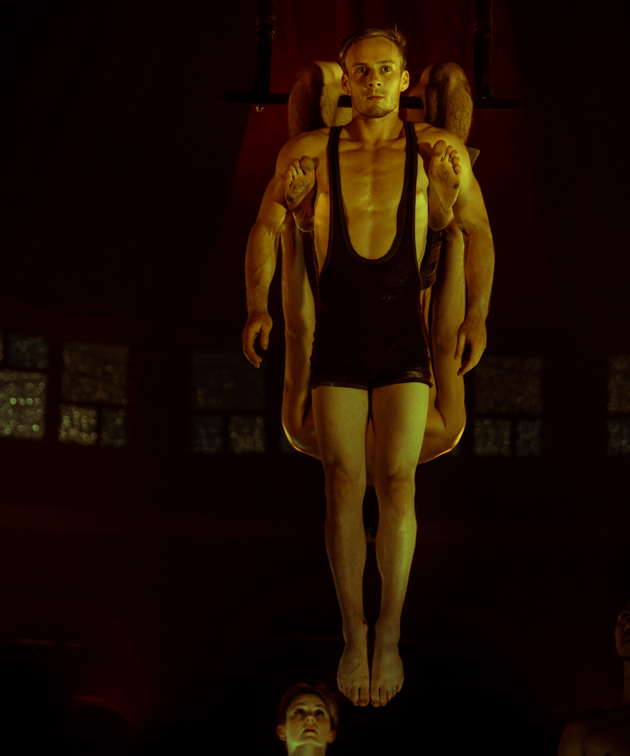
Image by David Smith
How long do you spend on an image in Photoshop?
"I’m a life photographer and like to keep my images as seen by the human eye but just 2 or 3 minutes in Photoshop can make the picture bounce."
Which tools do you use most often in Photoshop?
"Primarily you need to make the photo as good as possible using the camera. Some conditions ask for a High ISO to be used which produces a grainy image, in these cases I use a plug in to deal with the noise first. Then I can take the image into Photoshop.
Before anything else I crop the image, then I move on to adjust the levels and exposure. Other than this I use layers with overlay, softlight and sharpen, occasionally HDR and desaturate.
With a few extra tweaks in Lightroom and the image is complete."
Social Media
Whilst speaking with Heather, she offered her words of wisdom on Social Media.
"As with everything now Social Media is key for marketing yourself and sharing your images is vital. Many photographers are worried about the possibility of others stealing your photographs but you have to sacrifice some low resolution images sometimes to advertise, it all balances out in the end.
Companies may use your images to advertise their products which will in turn market you when the image is referenced correctly. If someone likes an image they will come to you and buy a hi-resolution limited print, web imagery marketing by and large works in your favour."
Along with web marketing Heather produces flyers and brochures for her exhibitions using Photoshop and InDesign, by far the best software available for this!
Having spoken with Heather and David about the photographs I snatched a few minutes with Leigh-Anne Director of MADE about her marketing and use of social media.
Leigh-Anne of MADE
MADE opened in only March of this year but has already created a great name for itself, I asked Leigh-Anne how she successfully built up a social media profile?
"We use the the usual channels, Facebook, Twitter and Instagram. Many of our followers have been in to look at the art, been to a workshop or been in for food and drink and picked up a brochure. We print our brochures every 2 months and we have gained many subscribers from this.
Having a shop has given an extra avenue of promotion, as soon as the scaffolding went up to re-paint the front of the shop a buzz was created by the locals. Following the completion of the renovation we had a very successful launch party well publicised through social media channels and careful campaigning."
How do you promote local artists?
"We promote local artists using blog posts, some of the artists deliver a free workshop to market themselves which we can then also publicise on social media."
Which social media tools have you found most useful/ had the biggest impact?
"I would say we gain most followers through Facebook and Twitter.
Twitter is very good for business to business and a very good place to start a conversation.
Facebook tends to be an older demographic of people wanting to read longer content or watch a video."
You can see ‘Fringes of Brighton’ at MADE, North Road Brighton until 5th June, definitely a must see during the Festival Celebrations 2016.
We run regular Photoshop courses, including Advanced Photoshop training. Our Social Media Course and Content Marketing Training have been revamped and updated to reflect current trends.
